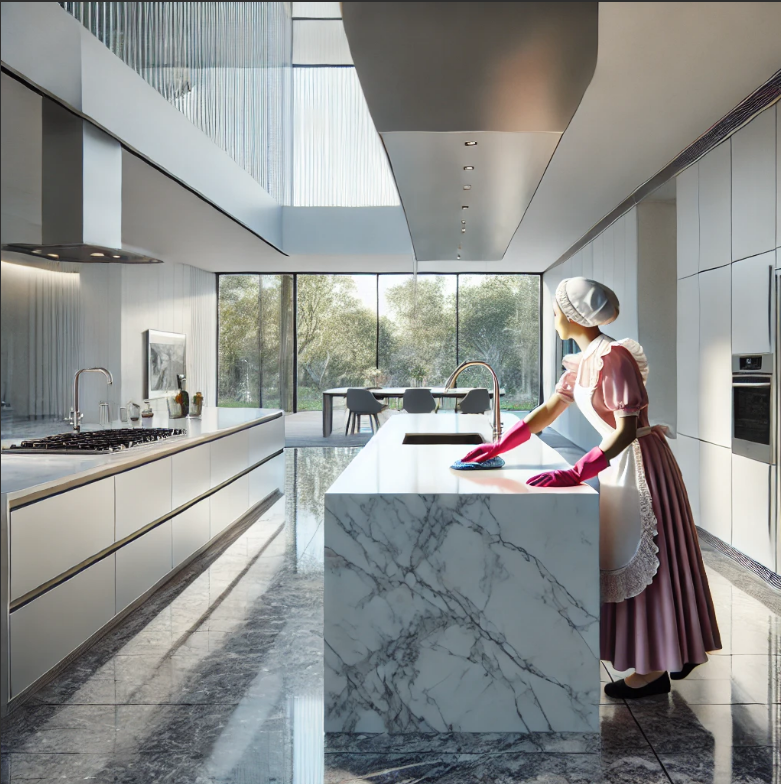
Preserving Charm While Ensuring Cleanliness in Your Heritage Property
Owning a historic home comes with the unique challenge of maintaining its charm and character while keeping it clean and functional for modern living. The cleaning and preservation of such homes require special consideration to avoid damaging delicate materials and to honor the architectural integrity of the building. Here’s a guide to help you balance these needs with effective cleaning techniques that are both gentle and efficient.
Understand Your Home’s Materials
Research and Knowledge: Start by understanding the materials prevalent in your historic home, such as original woodwork, antique tiles, plaster, and vintage fixtures. Research or consult with experts about the best care practices for these materials to avoid causing harm.
Custom Cleaning Solutions: Avoid harsh chemicals that can strip away original finishes or degrade old materials. Opt for pH-neutral cleaners that are gentle on all surfaces. In some cases, simple solutions like mild soap and water are safest.
Regular Dusting and Vacuuming
Soft Touch: Use soft brushes, cloths, and vacuum attachments designed for delicate surfaces. This is especially important for ornate woodwork and decorative moldings that can easily accumulate dust but are susceptible to scratches.
Frequent Light Cleaning: Regular dusting and vacuuming can prevent the buildup of grime that becomes harder to remove over time and might require more aggressive methods that could damage historic materials.
Tackle Humidity and Moisture
Control Indoor Climate: Historic homes are particularly vulnerable to damage from humidity and moisture. Use dehumidifiers and maintain a consistent indoor temperature to prevent the warping of wood and the growth of mold.
Ventilation: Ensure proper ventilation, especially in kitchens and bathrooms, to protect against moisture damage. This might mean using exhaust fans or opening windows strategically to enhance air circulation without exposing interiors to the elements.
Gentle Methods for Floors and Windows
Floor Care: Treat original hardwood floors with care by using minimal water, which can seep into and warp wood. Clean soft stone or tile with gentle, non-abrasive cleaners that won’t erode grout or finish.
Window Cleaning: Handle original windows delicately, especially those with antique glass or framing. Use a soft cloth and a non-ammonia-based cleaner to avoid damage and streaks.
Special Considerations for Exterior Maintenance
Soft Washing: When cleaning the exterior, avoid high-pressure washes, which can damage old brickwork, stonework, or siding. A soft wash with appropriate cleaners can effectively remove dirt without risking harm to the structure.
Landscaping and Drains: Keep gutters clean and landscaping trimmed. Proper drainage is crucial to prevent water damage to the foundation and exterior walls.
Engage Professionals When Necessary
Consult Experts: For significant cleaning tasks, especially those that involve structural elements or valuable finishes, consider hiring professionals who specialize in historic preservation. Their expertise can prevent costly mistakes.
Routine Inspections: Regularly schedule professional inspections to check for issues like termites, rot, and structural damage, which can be exacerbated by improper cleaning or neglect.
Preserve Historical Integrity
Documentation and Records: Keep records of all maintenance and cleaning procedures, noting products and methods used. This documentation can be invaluable for future reference or for any restoration projects.
Respect Architectural Integrity: Always prioritize the preservation of original features. Cleaning and maintenance should enhance the home’s historical value, not compromise it.
By adopting these tailored cleaning strategies, owners of historic homes can ensure their properties are not only clean and healthy but also maintain their historical significance and charm. Proper care and regular maintenance will protect these treasures for generations to come.